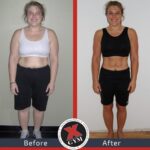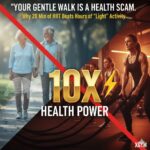We all consume (and even breathe) microplastics. There is no way to get away from it. The body is an amazing detox organism, though, so there is hope. The healthier you are, and the more things you do to mitigate and detox microplastics, the less effect they will have on you. This post attempts to offer suggestions on both. No one does all of them (because no one is that OCD), so don’t expect to be perfect. Just do what you can and see if you can add more over time, as some become easier when integrated into your lifestyle. Microplastics are never going away. They are here to stay, so this is a continual process for life. If you adopt that mindset, you will drastically reduce the load and improve your health.
Modern life has made plastic exposure unavoidable, with research showing microplastics present in 100% of human organs tested (2020 analysis). The average person consumes the equivalent of a credit card (5 grams of plastic) every week. Even “clean” produce like apples, tomatoes, and potatoes contain measurable microplastics.
The Biological Cost of Accumulation
Once ingested, these particles accumulate in soft tissues, enter the bloodstream, and tend to recirculate, particularly through the gut–liver loop, preventing simple “flushing.” This internal accumulation is linked to several anti-aging and health challenges:
-
Increased systemic inflammation
-
Endocrine (hormonal) disruption
-
Compromised immune system function
-
Higher cardiovascular risk (heart attack/stroke)
-
Reproductive and developmental concerns
Key Mitigation Strategies
Kitchen:
- Store food in glass containers: Use borosilicate or tempered glass to avoid microplastic leaching from plastic containers, especially when exposed to heat.
- Avoid heating plastic containers/cups: Heat causes hydrolysis, releasing micro- and nanoplastics. “BPA-free” and “microwave-safe” labels are misleading.
- Keep plastics away from heat sources: Store plastic items (e.g., seasoning containers) away from stoves or ovens to prevent heat-induced leaching.
- Rinse dishes/cups before use: Remove household dust, a major microplastic carrier, from dishes stored in open areas.
- Minimize scraping plastic containers: Scraping (e.g., yogurt containers) releases nanoplastics into food.
- Avoid canned soup: Cans lined with BPA alternatives (e.g., BPS) leach toxins, especially when filled with hot liquids, increasing urinary BPA levels significantly.
- Avoid hot liquids/foods in plastic-lined cups or paper plates: These have plastic coatings that release microplastics when heated.
- Avoid hot food in plastic store-bought containers: Examples include rotisserie chicken packaged in polypropylene bags.
- Replace plastic cutting boards: Switch to bamboo or wood to avoid millions of microplastic particles shed annually.
- Cook homemade meals: Ultra-processed foods (e.g., chicken nuggets) contain 5-10x more microplastics than minimally processed foods.
- Use loose-leaf tea or paper tea bags: Polypropylene tea bags release billions of micro- and nanoplastics in boiling water.
- Switch to glass/stainless steel coffee makers: Avoid Keurigs and plastic drip machines that release microplastics from heated components.
- Replace non-stick pans: Use stainless steel or cast iron to avoid microplastic release from scratched Teflon coatings.
- Avoid nylon cooking bags: Use parchment paper (ensure it’s silicone-free) for oven cooking.
- Wash rice thoroughly: Reduces microplastics by 20-40%, especially in instant rice, which contains 4x more microplastics.
- Use filtered water: Bottled water contains high microplastic levels; reverse osmosis filters are recommended, tailored to local water quality (use EWG’s Tap Water Database).
- Swap plastic utensils: Use stainless steel or wooden utensils to avoid flame retardants and microplastics, especially in black plastic.
- Choose microplastic-free salt: Opt for brands like Only Ancient Spring Salt or Vera Fine Pur to avoid contamination from seawater or processing.
- Use biodegradable sponges: Replace synthetic sponges with coconut fiber or cellulose to reduce microplastic shedding.
- Wrap meats in parchment paper: Avoid plastic-wrapped store-bought meats; source from butchers if possible.
- Choose PFAS-free air fryers: Use models with stainless steel baskets to avoid microplastic release from Teflon coatings.
Household:
- Switch to natural bedding: Use 100% organic cotton or other natural fibers (GOTS/GOLS certified) to avoid inhaling/absorbing nanoplastics from synthetic bedding.
- Wash bedding frequently: Wash sheets monthly and pillowcases bi-weekly to reduce microplastic buildup.
- Vent dryer exhaust outside: Prevents microplastic accumulation indoors from synthetic clothing.
- Leave shoes outside: Reduces microplastic particles tracked into the home.
- Use HEPA filters: Capture 99.97% of particles (MERV 14+ recommended) to reduce airborne microplastics.
- Vacuum/dust regularly: Use HEPA-filter vacuums and damp cloths to remove microplastics from surfaces.
- Close the toilet seat when flushing: Minimizes aerosolized particles, potentially including microplastics.
- Limit plastic toys: Opt for wood or cloth toys to reduce ingestion risks, especially for children.
- Filter shower water: Reduces microplastic exposure via skin contact and inhalation.
Clothing & Personal Care:
- Use CIR and Beat the Microbead: Tools to evaluate microplastic content in cosmetics and personal care products.
- Wear natural fibers: Choose cotton, wool, or linen over synthetic materials (e.g., polyester, nylon) to reduce skin absorption of microplastics.
- Opt for monthly contact lenses: More durable than daily lenses, reducing microplastic shedding in eyes.
- Use glass bottle eyedrops: Avoid plastic bottles that shed microplastics.
- Choose toxin-free personal care: Use products like NOBS toothpaste, Native body wash, or Weleda creams to avoid microplastics and harmful chemicals.
- Use plastic-free menstrual products: Avoid tampons/pads with polyethylene or polypropylene to reduce reproductive health risks.
Outside the Home:
- Avoid leaving plastic bottles in heat/sunlight: Prevents leaching in single-use bottles.
- Minimize BPA receipt handling: Use nitrile gloves if handling receipts frequently (e.g., cashiers).
- Clean assault bike blades: Reduces dust and microplastic distribution in gyms.
- Limit time on artificial turf: Synthetic turf degrades into inhalable microplastics.
Key Takeaways
- Heat and plastic incompatibility: Heat accelerates microplastic release through hydrolysis, making it critical to avoid heating plastics or exposing them to hot substances.
- Ubiquitous exposure routes: Microplastics enter the body via ingestion (food, water), inhalation (dust, air), and skin absorption (clothing, bedding).
- Practical swaps: Prioritize glass, stainless steel, wood, and natural fibers over plastic and synthetic materials.
- Processing increases contamination: Ultra-processed foods and products accrue more microplastics during production.
- “BPA-free” is misleading: Alternatives like BPS and BPF are equally harmful, requiring vigilance beyond marketing claims.
Philosophy
The guide encourages a pragmatic approach: “Take what fits. Leave what doesn’t.” It acknowledges the challenge of eliminating plastics entirely but empowers individuals to reduce exposure through informed choices. Part 2 below will cover detox strategies, with a focus on health optimization in a plastic-heavy world.
Disclaimer: The content is for educational purposes, not medical advice. Consult a healthcare professional before making changes.
Click here for source.
15 Detox Tactics
REMINDER: This is not medical advice. Gender, age, genetics, personal history, etc, all make a difference, so check with a qualified medical professional (preferably one who is well trained in functional medicine) before implementing anything.
- High-Intensity Exercise: Promotes sweating and lymphatic flow through muscle contractions, aiding toxin removal. Avoid tight clothing to support lymph flow.
- Sauna Therapy: Induces sweating to excrete toxins like flame retardants, heavy metals, phthalates, pesticides, BPA, and PFAs. Nanoplastics (1-1,000 nm) are likely excreted via sweat glands, unlike larger microplastics.
- Blood Donations: A year-long RCT showed plasma donation (every 6 weeks) and blood donation (every 12 weeks) significantly reduced PFAS levels, particularly PFOS and PFHxS. Note: Women who menstruate regularly will likely need a lower frequency than listed here, and they should watch their iron levels and related blood markers if they donate.
- Taurine: Mitigates BPA-induced mitochondrial toxicity and enhances sweat response, gland activation, and heat dissipation during exercise. Found in foods (e.g., seafood, meat) or supplements (taken 30 min pre-workout).
- Regular Bowel Movements: Essential to prevent toxin reabsorption. Achieved through circadian health and gut care, ensuring 1-2 daily movements to excrete lipophilic toxins.
- Probiotics via Fermented Foods: Probiotics (e.g., Lacticaseibacillus paracasei, Lactiplantibacillus plantarum) increase microplastic excretion (34% higher in mice) and strengthen gut barriers. Examples: kimchi, sauerkraut, kefir.
- Eliminate Gluten: Reduces gut permeability by lowering zonulin levels, preventing microplastic leakage into circulation, and supporting gut barrier integrity.
- Cut Body Fat: Microplastics (e.g., BPA) accumulate in fat tissue. Reducing fat mobilizes toxins into blood for liver processing and excretion via sweat, urine, or stool.
- Melanin Production: Melanin acts as a “radical sink,” binding toxins. Support production with safe sun exposure, avoiding sunglasses, minimizing blue light, and balancing Zn/Cu ratios (~10:1).
- Resistance Training: Builds muscle mass, increasing antioxidant enzymes (e.g., superoxide dismutase, catalase) to combat microplastic-induced oxidative stress and improve redox balance.
- Lymphatic Drainage: Elevate legs against a wall or use self-administered lymphatic massage to promote lymph flow and toxin excretion.
- Fiber Intake: Insoluble fiber traps microplastics, preventing absorption; soluble fiber forms a gel to bind and excrete them while producing gut-strengthening SCFAs. Sources: apples, berries, oats, asparagus, psyllium husk.
- Antioxidants/Supplements:
- NAC (600-1,200 mg/day): Boosts glutathione for liver detox.
- Glutamine (8-10 g/day): Strengthens gut lining to prevent toxin absorption.
- TUDCA (300-500 mg/day): Supports liver function and bile secretion.
- Milk Thistle (400-600 mg/day): Protects the liver from oxidative stress.
- Nattokinase (8k-12k FU/day): Enhances circulation for toxin processing (emerging evidence).
- Flushing Niacin: This vitamin opens the cells to release toxins. so they can be excreted into the toilet or through sweat.
- Activated Charcoal: Binds microplastics in the gut for excretion. Best used before fasted cardio and sauna sessions with water, salt, and magnesium to prevent constipation.
- Nutritional Levers: Support gut integrity and liver detox (no “detox diet”). Foods:
- Gut lining: Oysters, organ meats, bone broth, grass-fed beef, butyrate-rich foods (refrigerated rice, cooled potatoes, kiwi, raw cheese, grass-fed butter).
- Liver detox: Sulforaphane (broccoli sprouts), phenethyl isothiocyanate (watercress), citrus flavonoids, polyphenols (berries, tea, coffee, cacao).
- Broccoli sprouts: These little sulforaphane factories have 50X more sulforaphane than all grown broccoli (which is also a great source). Sulforaphane is a miracle compound that draws microplastics out of the cell better than anything else.
- Chlorella Vulgaris: Last, but not least, and actually the most important, is this non-negotiable essential detox tool. It’s listed last because there needs to be the most thorough explanation on this, to fully understand its importance in general detox, but especially in microplastics detox, hence the expanded chlorella section below.
Crucial Note on Bioavailability: Chlorella has a tough, indigestible cell wall. To effectively access its powerful detoxifying chlorophyll, nutrients, and its unique binding capacity, you must use a product with a broken cell wall or a processed cell wall. Otherwise, the body cannot assimilate its benefits, rendering it largely ineffective.
Technical and Clinical Benefits of Chlorella (Broken Cell Wall):
-
Toxin Reduction Efficacy: Clinical and preclinical studies demonstrate significant reductions in heavy metals (mercury, lead, tin, silver) within 90 days.
-
Accelerated Elimination: Chlorella can dramatically cut the toxin half-life in the body (e.g., reducing elimination time from 40 days to 19 days).
-
Unique Binding Mechanism: Multiple studies highlight chlorella’s unique ability to physically bind, carry, and escort toxic compounds (including heavy metals and microplastics) out of the body, preventing recirculation.
-
Microplastic and BPA Support: Research shows chlorella modulates immune responses and reduces liver toxicity related to exposure from BPA and microplastics.
-
Antioxidant Power: Potent support against oxidative stress and inflammation, combined with a dense source of vitamins (A, C, E, B-complex), minerals, and enzymes.
-
Chlorophyll Density: Contains the highest naturally occurring levels of chlorophyll, which is crucial for binding metals and supporting Phase II detox pathways.
Confused or overwhelmed? Yes, this post offers a wealth of information and numerous options, many of which you won’t or can’t do, so here’s the starter version:
1. Take 5-10 “pills” of chlorella first thing in the morning on an empty stomach.
2. Then eat a handful of homegrown broccoli sprouts.
3. Then, approximately two hours later, microplastics are making their way out of your cells, so then take 100 mg of (flushing) Niacin, which helps open up the cell even more.
4. As soon as you feel the flush starting, take two capsules of activated charcoal to bind the plastics that are exiting the cells, so you can excrete them.
5. Then get into an infrared sauna and sweat for 20-30 minutes, sipping filtered water throughout the session. If you don’t have access to a sauna, then do it through the same amount of exercise, with enough intensity to make you sweat.
Key Takeaways
- Lifestyle, not a quick fix: Detox is a long-term system, not a 21-day plan, focusing on sustainable habits.
- Your three main excretion pathways: Urine, stool, and sweat are critical for eliminating microplastics and toxins.
- Gut health is central: A fortified gut barrier prevents microplastic absorption and leakage into circulation.
- Sweating is key: Exercise and sauna are foundational for excreting nanoplastics and other toxins.
- Lipophilic toxins: Microplastics accumulate in fat; reducing body fat and supporting liver function aids detox.
- The Liver is your detox project manager: A healthy, well-functioning liver is crucial in this process.
- Pragmatic approach: “Take what fits. Leave what doesn’t.” The guide prioritizes actionable, non-neurotic strategies.
Philosophy
The guide builds on Part 1 Top of page) mitigation strategies, emphasizing that reducing exposure is the first step in detox. It encourages integrating these tactics into daily life to enhance the body’s natural detoxification processes, with a bullish outlook on health optimization despite environmental challenges.
Disclaimer: The content is for educational purposes, not medical advice. Consult a healthcare professional before making changes.









